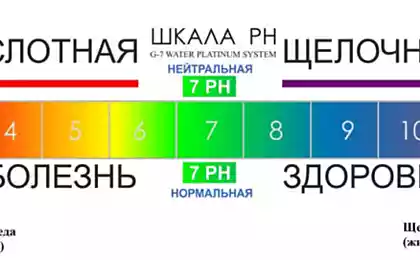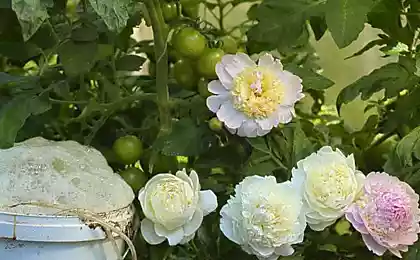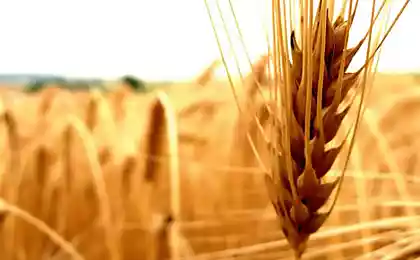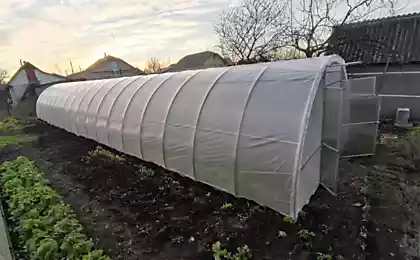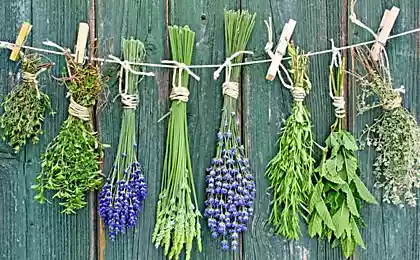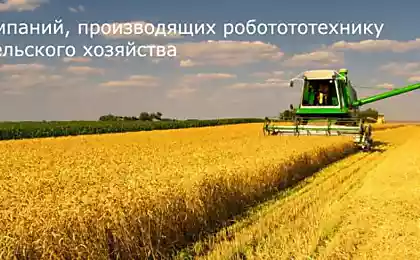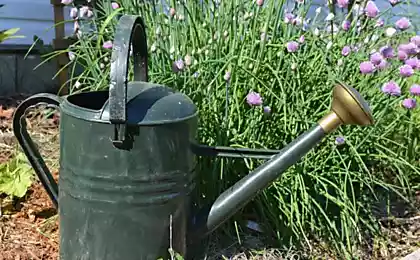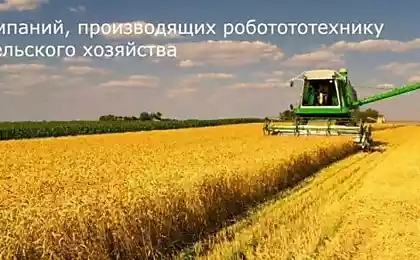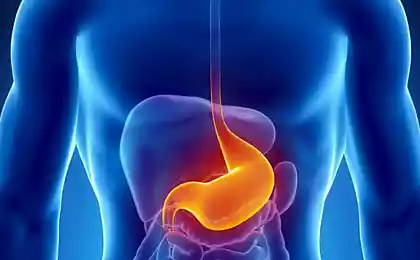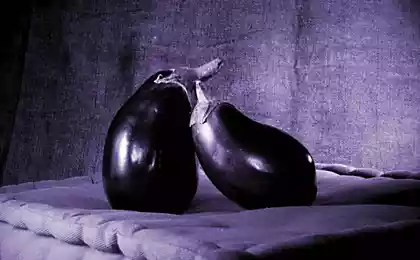507
Transparent soil for growing crops
The newly developed transparent soil sheds light on the secret world of plant roots. New material invented by biologists, physicists and chemists, will help to improve yields and find new ways to avoid outbreaks of food poisoning.
Plants absorb water and minerals with root systems, which is much larger than the aboveground plant parts. Scientists are happy to find out new things about the roots, but most of the information remains hidden under the ground.
"In the soil will uncover even a lot, and we still do not know exactly what," says the biologist-theorist Lionel Dupuy Institute James Hutton in Dundee, Scotland.
Two years were spent on trial and error, namely careful selection of acidity, and size of the grains and nutrient content in a whole range of artificial materials such as soil and humidified special liquid solutions. As a result of Dupuy and his colleagues were able to develop a transparent soil in which to grow plants. The material allows you to create a three-dimensional image of the rhizosphere – zone of soil where you develop the roots of plants and related organisms.
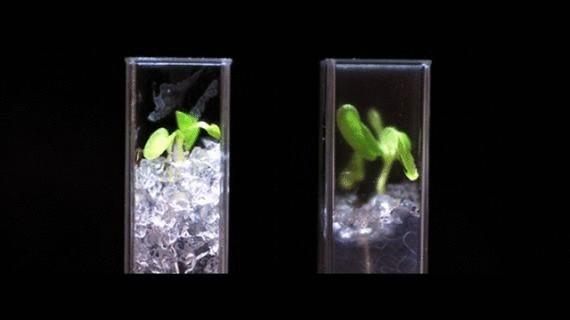
The soil is made of granules with the size of 350-1600 microns of a synthetic material known as Nafion. Thanks to your ability to control the flow of the conductive ions this substance is often applied in the energy fuel cells. Past research has revealed that the material has another unique property: on the membranes of Nafion can develop layers of bacteria. In addition, scientists have learned how to modify the grains nation thus to bind ions in the surrounding liquid solution, mimicking the natural chemistry of the soil.
Artificial soil is itself opaque. But when it is saturated with a special solution on the basis of water, the mixture of chemicals interacting with each other, begins to refract light, providing transparency. A similar effect can be observed, lowering one clean glass jar into another clean glass jar and fill the smaller container and the space between the vessels with paint thinner. In the result it would seem that less capacity is gone.
Although the material is not perfectly simulate the real soil, its physical and chemical properties are close enough. Independent scientists believe that the study represents huge progress. This brand new realistic way to look at the roots, which opens possibilities for studying of plant physiology and methods of cultivation, and also for studies of the interaction between plants and microbes.
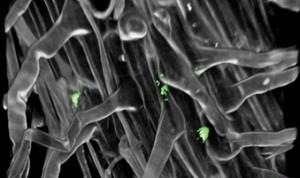
Dupuy and his colleagues used a transparent soil to analyze how potentially lethal is Escherichia coli, in collaboration with roots of lettuce. Although E. coli is a useful microbe in our gut which fight harmful bacteria and may even produce essential vitamins, dangerous species can cause serious food poisoning. The researchers used a genetically modified version of E. coli with green fluorescent protein of jellyfish to see how it behaves in interaction with a salad. They found that bacteria form micro-colonies in the root zone, which obviously helps them to survive outside of the intestine.
"If we can figure out ways of pollution, we can develop strategies to limit exposure to E. coli in the food chain — said Dupuy. – We don't really understand how E. coli enters the food chain, particularly in fresh produce."
The material can be used to study the spread and transmission of other infections through the soil. For example, nematode worms transmit viruses to crops, and using transparent soil to study their nutritional characteristics.
The invention may also help to analyze the roots of plants with the aim of growing crops with more efficient root systems, allowing, respectively, to reduce the consumption of water and fertilizers. Features of roots are often neglected in the programs of growing plants, as the soil conditions are very difficult to study the performance of the root system. Transparent soil reveals new possibilities in this field. For example, researchers can genetically modify plants so that key growth hormones and other compounds were identified fluorescent proteins. This will help them to track the circulation of these molecules in living plants and see how roots behave. The result will be able to figure out why some plants behave better than others under the same growing conditions.
"If we want to make crops richer and methods of agriculture more efficient, we need to collect information at the molecular level to develop improved methods of growing plants with suitable root systems," says Dupuy.
Source: /users/276
Plants absorb water and minerals with root systems, which is much larger than the aboveground plant parts. Scientists are happy to find out new things about the roots, but most of the information remains hidden under the ground.
"In the soil will uncover even a lot, and we still do not know exactly what," says the biologist-theorist Lionel Dupuy Institute James Hutton in Dundee, Scotland.
Two years were spent on trial and error, namely careful selection of acidity, and size of the grains and nutrient content in a whole range of artificial materials such as soil and humidified special liquid solutions. As a result of Dupuy and his colleagues were able to develop a transparent soil in which to grow plants. The material allows you to create a three-dimensional image of the rhizosphere – zone of soil where you develop the roots of plants and related organisms.

The soil is made of granules with the size of 350-1600 microns of a synthetic material known as Nafion. Thanks to your ability to control the flow of the conductive ions this substance is often applied in the energy fuel cells. Past research has revealed that the material has another unique property: on the membranes of Nafion can develop layers of bacteria. In addition, scientists have learned how to modify the grains nation thus to bind ions in the surrounding liquid solution, mimicking the natural chemistry of the soil.
Artificial soil is itself opaque. But when it is saturated with a special solution on the basis of water, the mixture of chemicals interacting with each other, begins to refract light, providing transparency. A similar effect can be observed, lowering one clean glass jar into another clean glass jar and fill the smaller container and the space between the vessels with paint thinner. In the result it would seem that less capacity is gone.
Although the material is not perfectly simulate the real soil, its physical and chemical properties are close enough. Independent scientists believe that the study represents huge progress. This brand new realistic way to look at the roots, which opens possibilities for studying of plant physiology and methods of cultivation, and also for studies of the interaction between plants and microbes.

Dupuy and his colleagues used a transparent soil to analyze how potentially lethal is Escherichia coli, in collaboration with roots of lettuce. Although E. coli is a useful microbe in our gut which fight harmful bacteria and may even produce essential vitamins, dangerous species can cause serious food poisoning. The researchers used a genetically modified version of E. coli with green fluorescent protein of jellyfish to see how it behaves in interaction with a salad. They found that bacteria form micro-colonies in the root zone, which obviously helps them to survive outside of the intestine.
"If we can figure out ways of pollution, we can develop strategies to limit exposure to E. coli in the food chain — said Dupuy. – We don't really understand how E. coli enters the food chain, particularly in fresh produce."
The material can be used to study the spread and transmission of other infections through the soil. For example, nematode worms transmit viruses to crops, and using transparent soil to study their nutritional characteristics.
The invention may also help to analyze the roots of plants with the aim of growing crops with more efficient root systems, allowing, respectively, to reduce the consumption of water and fertilizers. Features of roots are often neglected in the programs of growing plants, as the soil conditions are very difficult to study the performance of the root system. Transparent soil reveals new possibilities in this field. For example, researchers can genetically modify plants so that key growth hormones and other compounds were identified fluorescent proteins. This will help them to track the circulation of these molecules in living plants and see how roots behave. The result will be able to figure out why some plants behave better than others under the same growing conditions.
"If we want to make crops richer and methods of agriculture more efficient, we need to collect information at the molecular level to develop improved methods of growing plants with suitable root systems," says Dupuy.
Source: /users/276
